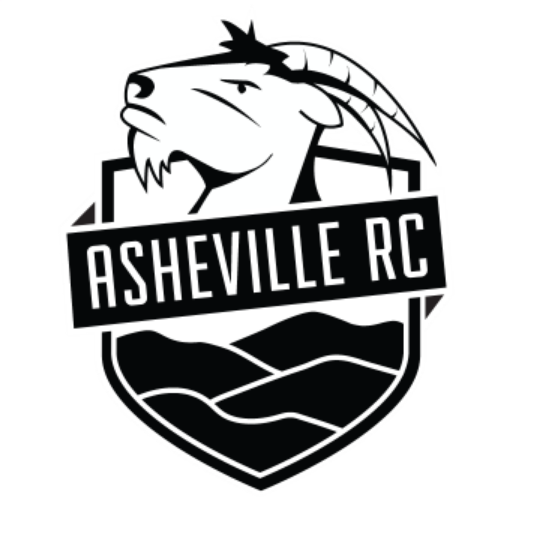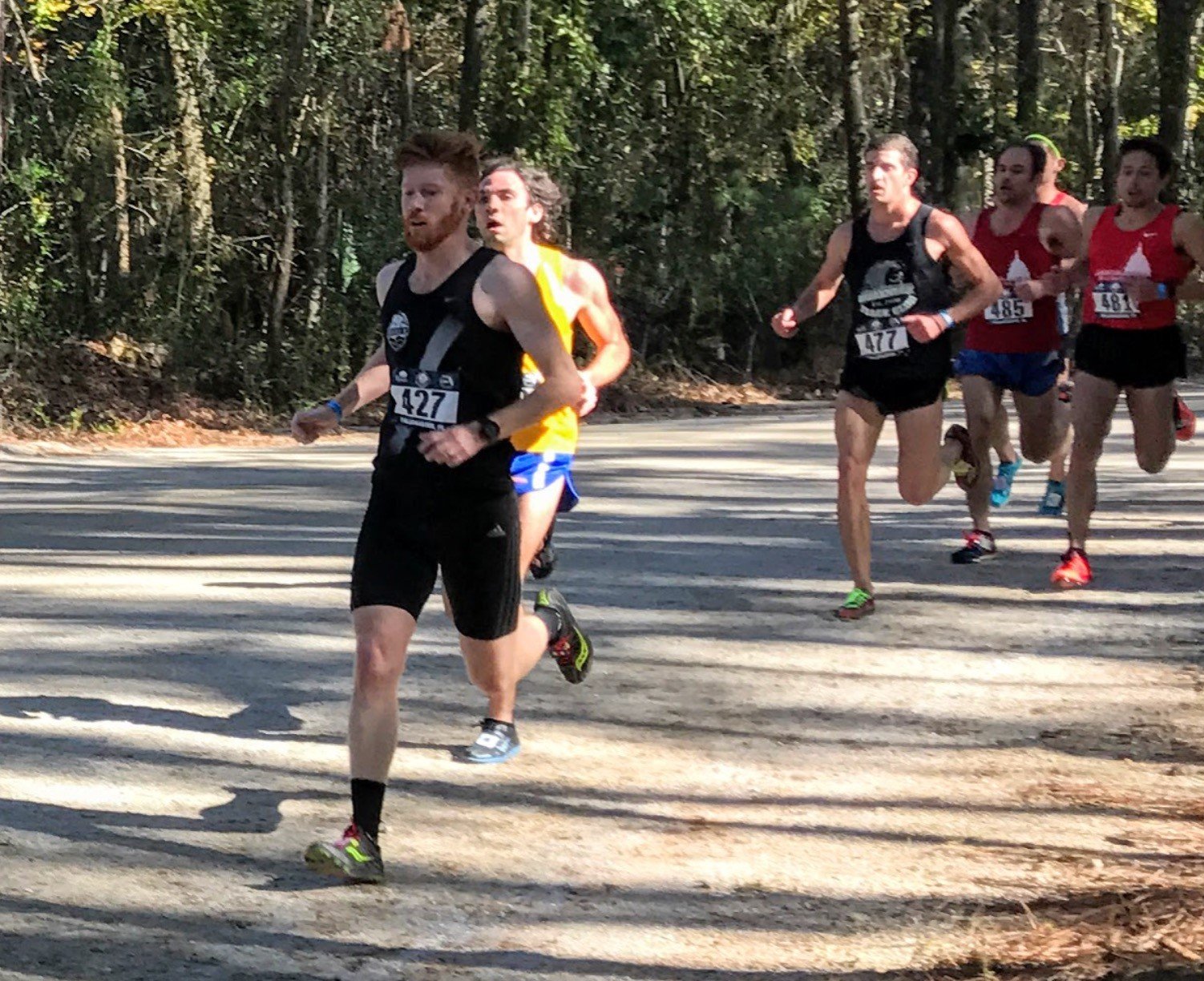An Introduction
The Asheville Running Collective is excited to have you along for the journey as we move through our ten-week training program.
The overall plan is divided up into three distinct phases with workouts assigned in two-week blocks. Through semimonthly emails, the current phase’s workout details, explanations, and examples will be shared alongside training tips, strength work, and more.
Considerations
The ARC’s 10-week training outline is focused on providing general ideas (with specific examples) to aid you in structuring your own training. It would be irrational (and irresponsible) to propose one specific plan as the golden ticket to Shut-In glory. An athlete’s unique set of strengths and weaknesses (AKA: “areas for growth!”), training and racing experience, and life circumstances should inform the kinds of workouts performed and the time at which they are implemented. Hopefully, the training ideas and examples that follow will provide you with new information, motivation, and/or just some food for thought.
+ Personal preferences can lead to a bias toward (or away from) one kind of workout, nutrition plan, or race strategy. These may be grounded in the successful execution of a goal race (“Wow, those hill reps really made me feel strong!”), the recurring nightmares of an epic blow-up (“Note to self: stop mixing Maurten with mayo”), or the current topic trending on your social media feed (“If double threshold days work for Henrik, Filip, and Jakob, surely they’ll work for me!”). Some of these ideas may be valid and should be considered when figuring out where to place an emphasis in your training cycle. Others may be the extra 1% that you really shouldn’t worry about until you’ve got the first 99% figured out. A major part of the deal with planning and executing a successful training plan, as well as nailing the subsequent goal race, is figuring out these details, knowing when to push further, and recognizing when to cut back. You’ll be the best judge when it comes to this part of the plan. If not, hire a coach to do it for you!
+ Life circumstances will also play a large role in the way an athlete can prepare for the specific demands of any event. Shut-In goes uphill. Actually, it starts with a downhill, but before ya know it… right back up. After a couple of dips, it goes back up a bunch more. It’s flat for a while, but then right back up. To be honest, it finishes on a downhill, too. Some people forget that. However, there’s a pretty nasty climb right before, so… basically, it’s hilly. You may not have hills to train on (shout out to our beach-based subscribers!), so some/many of the workouts suggested here won’t directly apply. However, they can still serve as a reminder that the race definitely has a lot of uphill and you should figure out some workarounds to prepare for that.
+ In the same vein, you might not be local, so you’ll be scratching your head at the mention of Kitsuma, Chumbawamba, and some of the other cherished routes that may be mentioned in workout examples. No worries. You can get the general spirit of the workout and apply it at your preferred training ground.
Threading the Needle
No one-size-fits-all plan can actually fit the needs of everyone. This outline is crafted with the idea of being doable by a good number of people, with some amount of the audience needing to scale it back, and another group ready to add on. All runners should plan to supplement the workouts given with the training they need to stay healthy, build fitness, and be ready on race day. Some ideas for regressions, progressions, and supplementations will be given along the way.
+ Volume is another tricky area to plan for when sharing a training program with a large audience. You should be realistic about your starting point, the time you can commit to training, and the demands of the event. At the same time, this is an aerobic event and it would be considered a “long distance” by most (no comments from the 200-mile specialists in the crowd, please). So, you definitely need to put in some volume (relative to your experience and ability), and build your endurance.
+ The training outline is made for an athlete that has put in a period of training and has built up a decent base of fitness prior to beginning the ten weeks. If you are lacking a base, your Shut-In prep should prioritize easy and steady running while building up your long run.
The Nuts and Bolts
The plan is laid out into two major four-week training phases followed by a two-week taper period. Each training period is broken into two-week blocks. This will give you some flexibility when planning your workouts.
To start the program, we will focus on Phase 1. General workouts are listed below with workout details and examples coming soon in a future email.
Training Phase 1: Build Fitness
Key Points:
- Build up training volume
- Lengthen the Long Run
- Incorporate a variety of efforts
- Improve efficiency with strides and hill workouts
- Work on weaknesses
Notes:
- Focus on effort over pace early in the training block.
- Use effort-based guides if you don’t have much recent experience with shorter distance races (ex: “quick” for 5k race pace/effort and “strong” for 10k race pace/effort).
- This training outline does not include “hero” workouts. Save the race effort for race day (or include 1-2 tune-up races or time trials to feed your need for speed).
- Aim to get in these four workouts over the two-week period. Fill in the week with easy running, supplementary workouts (more info to come on those), cross training, and/or recovery days as needed.
Phase 1 Outline
Weeks 1 & 2: August 29 - September 11
Repetitions at 10k—>5k effort
Ex: 5-6 x 3 min @ 10k effort + 4-6 x 1 min @ 5k effort (90-sec jog on all)
Easy Long Run
Ex: Gentle effort for appropriately challenging duration over easy-to-moderate terrain
Mechanics / Turnover
Ex: 6 x 40-sec quick on flat + 6 x 40-sec quick on moderate hill (80-sec recovery on all)
Long Run with Climbs
Ex: Gradual increase in distance (10-15%) from last long run with increased vertical gain
Weeks 3 & 4: September 12 - September 25
Threshold Repetitions
Ex: 4 x 5 min @ one-hour race effort (1 min jog recovery)
Long Run with Steady Repetitions
Ex: 60-90 min easy, 3 x 15 min @ race effort (3 min jog), easy to desired duration (75-85% of goal race time)
Hill Repeats
Ex: 8-10 x 2:00 at strong & controlled effort on moderate—>steep grade (jog down)
Medium Long Run on Trail
Scale back recent long runs by 25% or so
Training Phase 2: Get Specific
Key Points:
- Hold higher training volume
- Focus workouts on long steady efforts & efficient climbing
- Prioritize recovery around big efforts
- Get comfortable on technical terrain
- Dial in nutrition plan
- Practice routines for race day
Training Phase 3: Focus on Racing
Key Points:
- Lower volume gradually
- Workouts become moderate in volume
- Emphasize strengths
- Set race day routines
Up Next
The details of Phase 2 and the Taper Phase will be introduced and explained in the coming weeks.
Future missives will also cover:
- Suggestions for planning your training volume
- More workout ideas
- Supplementary running sessions, strength work, and exercises for injury prevention
- Tips, tricks, and race recollections from experience Shut-In racers
About the Author
Mark Driscoll is an Asheville-based running enthusiast and coach working a wide range of ages and abilities in a variety of disciplines: cross country, track, road, and trail. Along with coaching a number of Shut-In finishers, and a couple of recent champs, he won the 2013 edition of the event. This year, he hopes to get back to the start line (and then the finish line) after a nine-year hiatus.
Many other contributors from the ARC, and the greater WNC running community, will be featured throughout the program. Stay tuned.
Questions or comments about the program? Email us with SHUT-IN in the subject line.
Join the Club
The Asheville Running Collective would love to have you join our ranks!
Anyone can join, regardless of speed, age, or experience. With increased membership, we will be in a better position to unite runners and racers in Western North Carolina behind our shared mission, pull in more leaders and volunteers for ARC-sponsored events and initiatives (like this program), and have a broader reach in the community.






